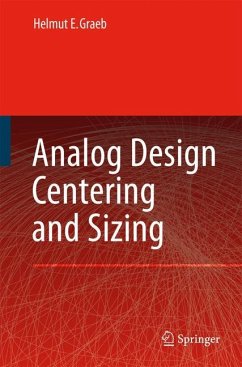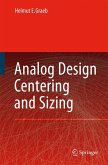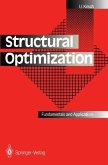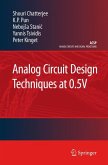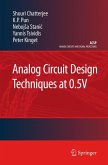What you'll find here is a fascinating compendium of fundamental problem formulations of analog design centering and sizing. This essential work provides a differentiated knowledge about the tasks of analog design centering and sizing. In particular, worst-case scenarios are formulated and analyzed. This work is right at the crossing point between process and design technology, and is both reference work and textbook for understanding CAD methods in analog sizing.
This book represents a compendium of fundamental problem formulations of analog design centering and sizing. It provides a differentiated knowledge about the tasks of analog design centering and sizing. In particular the wor- case problem will be formulated. It stands at the interface between process technology and design technology. This book wants to point out that and how both process and design technology are required for its solution. Algorithms based on the presented material are for instance available in the EDA tool WiCkeD [88]. The intention is to enable analog and mixed-signal designers to assess CAD solution methods that are presented to them. On the other side, the intention is to enable developers of analog CAD tools to formulate and develop solution approaches for analog design centering and sizing. The structure of the book is geared towards a combination of a reference book and a textbook. The presentation goes from general topics to the more speci?c details, preceding material is usually a prerequisite for succeeding material. The formulations of tasks and solution approaches by mathematical means makes the book suitable as well for students dealing with analog design and design methodology. The contents is structured as follows: Chapter1sketchestheroleofanalogcircuitsandanalogdesigninintegrated circuits. Anoverviewofanalogsizingtasksandthecorrespondingterminology is introduced. Chapter 2 illustrates analog sizing and yield optimization/design centering with the simplest example of an RC circuit. Chapter 3 describes the basic input and output quantities of analog sizing.
This book represents a compendium of fundamental problem formulations of analog design centering and sizing. It provides a differentiated knowledge about the tasks of analog design centering and sizing. In particular the wor- case problem will be formulated. It stands at the interface between process technology and design technology. This book wants to point out that and how both process and design technology are required for its solution. Algorithms based on the presented material are for instance available in the EDA tool WiCkeD [88]. The intention is to enable analog and mixed-signal designers to assess CAD solution methods that are presented to them. On the other side, the intention is to enable developers of analog CAD tools to formulate and develop solution approaches for analog design centering and sizing. The structure of the book is geared towards a combination of a reference book and a textbook. The presentation goes from general topics to the more speci?c details, preceding material is usually a prerequisite for succeeding material. The formulations of tasks and solution approaches by mathematical means makes the book suitable as well for students dealing with analog design and design methodology. The contents is structured as follows: Chapter1sketchestheroleofanalogcircuitsandanalogdesigninintegrated circuits. Anoverviewofanalogsizingtasksandthecorrespondingterminology is introduced. Chapter 2 illustrates analog sizing and yield optimization/design centering with the simplest example of an RC circuit. Chapter 3 describes the basic input and output quantities of analog sizing.

